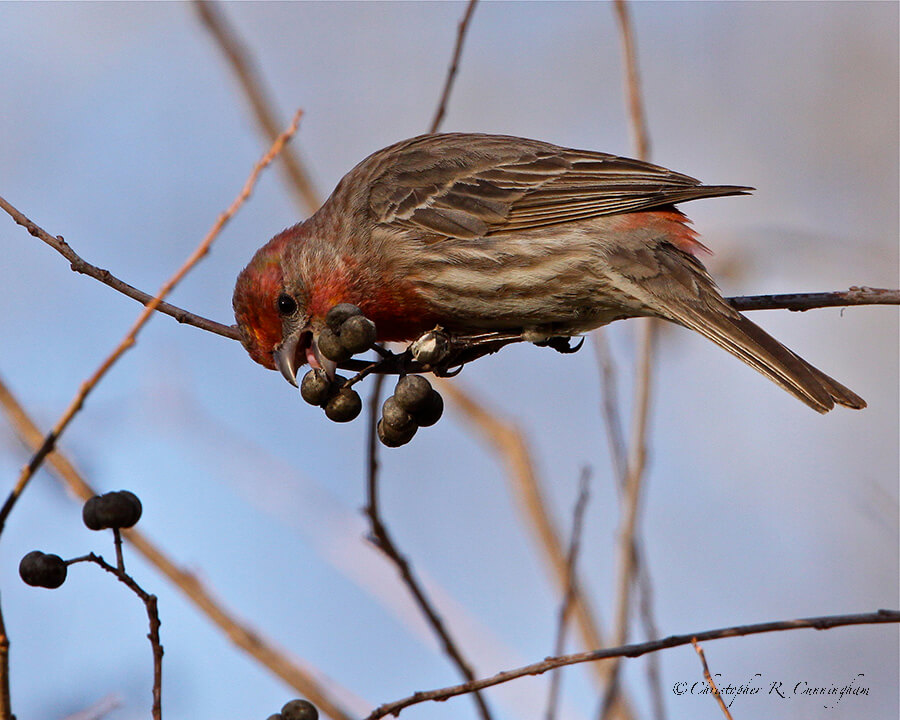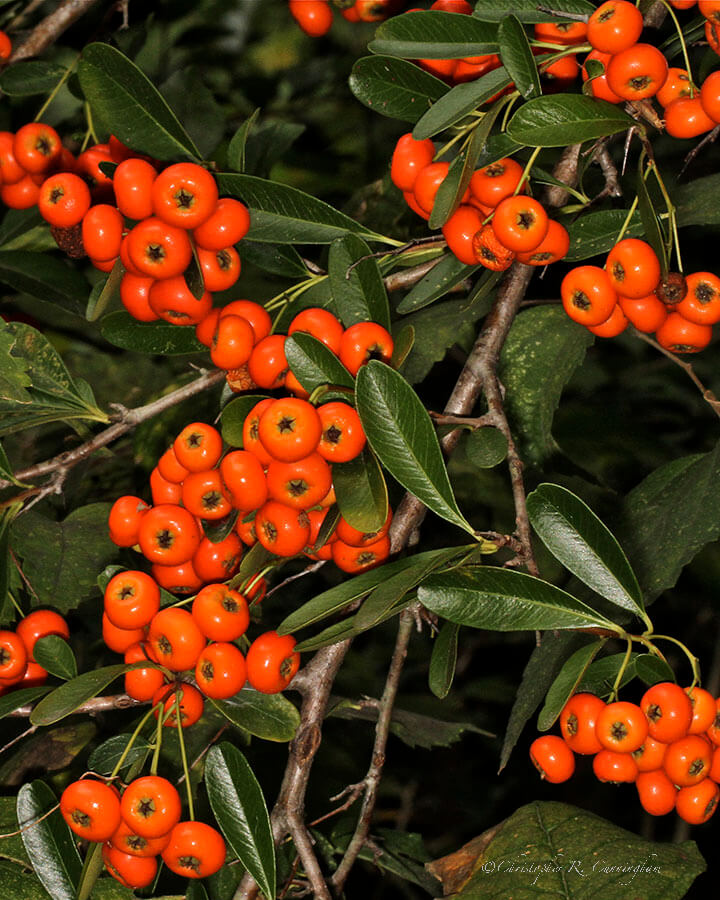Knowledge is knowing that a tomato is a fruit. Wisdom is knowing not to put it in a fruit salad. –Brian O’Driscoll
One of the treats of birding in the cooler months is watching for birds enjoying the many types of conspicuous fruits and berries that can be found in the woodland habitats of the Texas Gulf Coast. Yaupon holly (Ilex vomitoria), greenbriar, and agarita are just a few of the many examples of native plants bearing brightly-colored berries during fall and winter that are popular with birds. As a photographer I always have an eye out for a Cedar Waxwing, American Robin, Northern Mockingbird, or Northern Cardinal with a rosy-ripe and juicy berry in its beak.
As a novice field botanist, I often photograph newly encountered fruit-bearing plants with the hopes of later identifying them. It soon becomes evident, however, that the landscape is dotted with exotic fruit-bearing plants from around the globe–escapees from gardens, seeds sown through the digestive tracts of birds or mammals. Sometimes they are identifiable, sometimes not. I’m sure some of the species that I find impossible to identify are, to landscapers and nurserymen, commonly-known, popular garden varieties–from South America, the Caribbean, or that great cradle of Angiosperm evolution, Northern China.

It might be tempting to suppose that these introduced species may be harmless or even helpful to birds, given that they produce edible fruits. Species of Pyracantha, for example, are commonly encountered invasives that produce copious amounts of bird-friendly fruit–and birds are implicated in the spread of these Eurasian plants. The Chinese tallow tree is another common invasive. Chinese tallow may be the greatest challenge, after man himself, to the warm native forests of North America. About 23% of all trees in the Houston area are now Chinese tallows.
In contrast to many of the natives, some of these foreign plants seem strangely sterile: not an arthropod of any kind is to be seen on them. As these foreign invaders have proliferated, robbing pollinators and insectivorous birds, displacing and replacing native ecological equivalents, songbird numbers have declined an estimated 40% in my lifetime. Of course, it’s hard to prove which aspect of humankind’s activities–chopping, plowing, spraying, shooting, paving, or planting foreign invasives has been most disastrous for our birds–but to me it doesn’t really matter–it’s all of a piece. Homo sapiens sapiens, the Yersinia pestis, of the planet’s biosphere marches unrelentingly on . . . We are, it seems, in the midst of an anthropogenic mass extinction event. And the Dodo, Ivory-billed Woodpecker, Passenger Pigeon, Carolina Parakeet and Hawai’i Mamo bore witness. . . .

©2012 Christopher R. Cunningham. All rights reserved. No text or images may be duplicated or distributed without permission.